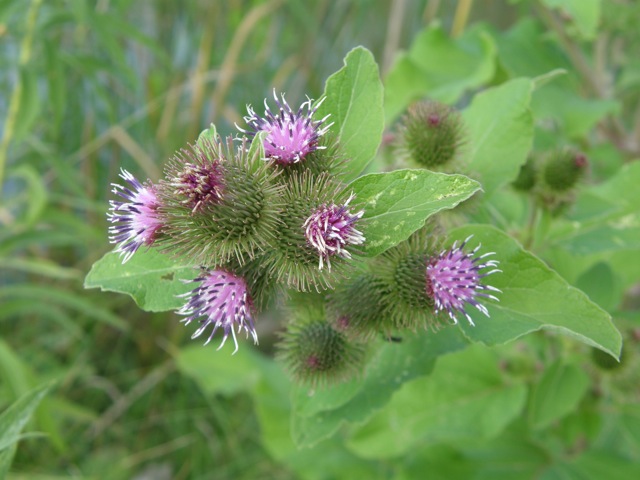Asteraceae, the daisy, sunflower or composite family.
Description:
Plant:
Robust, branching plant 2'-5' tall with large leaves and small pink flowers
emerging from bur-like heads.
Biennial.
Flowers:
Thin pink tubes topped by purple and white filaments emerging from
bur-like base consisting of overlapping bracts with hooked tips.
The thread-like components are actually the stamens and pistils of the
individual florets, but the details are too small to see without
magnification.
Leaves:
Large, up to 18", alternate, ovate to heart-shaped, sparsely toothed,
woolly beneath, with hollow stems.
Fruit:
The head closes after blooming to form a bur covered with hooked bristles,
which catch and hold to fur and clothing
Blooming:
July-October
Habitat:
Drier fields, waste areas.
Comments:
Introduced from Europe, and sometimes a troublesome weed.
The burs catch on animals (and people), which provide a mechanism
for dispersing the seed.
The plant is edible, and prized as food in some cultures, especially in Japan.
The roots can be peeled, boiled and eaten, as can the young shoots.
The Swiss inventor George de Mestral credited his development of Velcro
to examining the mechanism of attachment of the burs.
Where to find it:
On the west side of the park, near the boundary with the Islamic center, and
a few other drier, open locations.
